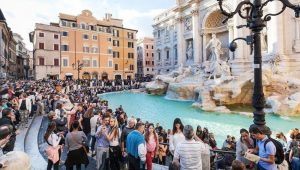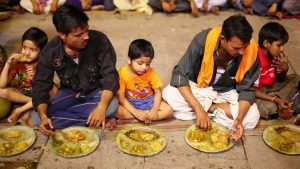Introduction
In these times, sustainability has become increasingly important in virtually every aspect of our lives. Therefore, the sustainability issue has naturally also reached the hospitality industry. Almost all hotels mention on their website how they have implemented sustainability in their business. But sometimes you have to question how much sustainability is really part of their operations. Is it just a skillful marketing trick or is sustainability really applied through different departments of the company?
This article focuses on the Scandic hotels, a group arguing to be sustainable and a “pioneer within CSR” (Scandic Hotels Group AB, n. d.).
Scandic Hotel Group
The Scandic Hotels Group consists of 280 hotels, which are located in six different Countries (Sweden, Finland, Norway, Denmark, Poland and Germany). The first hotel opened in 1963 and today the group has more than 10.000 employees. Most of their revenue (around 70%) is made by business travel and the rest is generated by leisure travel (Scandic Hotels Group AB, n.d.a). In 1993 they first started to work on sustainability within the company. They launched a sustainability program, inviting guests to hang up their towels if they wanted to use them again. Today this is a mainstream practice in many hotels, but Scandic was the first to implement it. Three years later they began to report environmental data and started to use less single use plastics. In 2003 they also made all their hotels accessible for everyone (Scandic Hotels Group AB, n.d.b).
Scandic applies four main ‘values’ in their work, internally and externally: “Be caring”, “Be a pro”, “Be you” and “Be bold”. The first one includes being caring to the people, the planet and society. “Be a pro” conveys to always deliver high quality, “Be you” means treating each guest as an individual and “Be bold” says that they dare to do things differently and will leave their comfort zone (Scandic Hotels Group AB, n.d.c).
Efforts regarding implementing sustainability
“Going green” can create different kinds of profits for hotels. One of them being that the hotels can save costs, for example by saving water or energy or minimizing waste (Cherry, 2014). Furthermore, 70% of travellers would be more likely to book an accommodation that is eco-friendly, even if they weren’t looking for an eco-friendly accommodation (Booking.com, 2019). So, bearing this in mind, for some hotels going green could simply be a marketing strategy to attract more guests. Nevertheless, if a company is not truly committed to sustainability and they are only trying to portray a green image for marketing purposes, without really implementing a strategy or measures, it means they are pursuing a ‘greenwashing’ strategy (Lin-Hi, n.d.). True and credible commitment means that the company must set long-term goals and values, even if this could conflict with the hotel’s profits (Cherry, 2014).
Looking at the sustainability efforts of the Scandic Hotels Group, you firstly find that more than half of Scandics hotels are certified with either the Nordic Ecolabel, Green Globe or the EU Ecolabel. This means that they have to comply with the guidelines of the certification scheme regarding, for example, carbon dioxide emissions, water and energy usage, waste management and chemicals use (Scandic Hotels Group AB, n.d.c). When looking closer at one of the certification schemes, for example, you can find that Green Globe has 44 core criteria and 380 indicators Green Globe (n.d.a), of which 50% have to be achieved in order to be certified.

The certified members are checked by an independent auditor in alternating years Green Globe (n.d.b). Green Globe is following the international standards of the GSTC (Global Sustainable Tourism Criteria), the Agenda 21 and more Green Globe (n.d.a). Moreover, Scandic supports and contributes to some of the SDGs. One of them, for instance, is the Gender Equality goal. They analyse their gender balance when recruiting and, if necessary, they act on it. Other SDGs Scandic contributes to are, for instance: clean water and sanitation, responsible consumption and production (Scandic Hotels Group AB, n.d.c).
As already mentioned, the hotel group has been working on their sustainability for a long time – since 1993. In 1996 they began with a uniform reporting of key consumption figures per hotel (Scandic Hotels Group AB, n.d.d). The hotel’s website contains the annual reports from the past five years, in which the sustainability report is integrated. In the sustainability report the hotel group openly communicates its environmental data. Different figures regarding energy and waste consumption and CO2 emissions are some of the figures that can be found (Scandic Hotels Group AB, n.d.c). The hotel group had set long-term goals until 2020 in four different categories: diversity & inclusion, health, CO2 emissions and waste. These goals can already be found in the 2015 report and include, for example, a good level of diversity, an objective of ten percent less CO2 emissions and ten percent more waste recycling. Every annual and sustainability report since 2015 contains figures on these goals. These figures are further compared to the previous year’s figures and the target (Scandic Hotels Group AB, n.d.c). Their sustainability approach is also being promoted on the website. Directly on the landing page, sustainable business travel is advertised. There is a whole tab dedicated to the sustainability on the Scandic Hotels Group website, where they mention their goals and what they have reached so far (Scandic Hotels Group AB, n.d.b). One of the measures Scandic likes to promote on their website is, for example, the tap filtered water, served in recycled glass jugs. Furthermore, Scandic serves an ecological breakfast, with vegetarian and vegan options (Scandic Hotels Group AB, n.d.d).
Conclusion
All in all, it can be said that Scandic has implemented many measures showing their commitment in becoming a more sustainable company. As they have been working on different levels, searching and implementing ways to act more sustainable for a long time, it seems that sustainability is truly incorporated in the company’s DNA and in the minds of the hotel’s employees and managers. The sustainability of the company can also be proven, to a certain extent, by the certifications that many of the group’s hotels have. In addition, the group has set itself long-term goals and integrated sustainability into its corporate values, which displays the group’s sustainable vision for the future.





